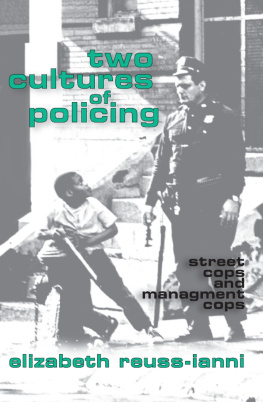First published 2015 by Ashgate Publishing
Published 2016 by Routledge
2 Park Square, Milton Park, Abingdon, Oxon OX14 4RN
711 Third Avenue, New York, NY 10017, USA
Routledge is an imprint of the Taylor & Francis Group, an informa business
Copyright John Kerr 2015
John Kerr has asserted his right under the Copyright, Designs and Patents Act, 1988, to be identified as the author of this work.
All rights reserved. No part of this book may be reprinted or reproduced or utilised in any form or by any electronic, mechanical, or other means, now known or hereafter invented, including photocopying and recording, or in any information storage or retrieval system, without permission in writing from the publishers.
Notice:
Product or corporate names may be trademarks or registered trademarks, and are used only for identification and explanation without intent to infringe.
British Library Cataloguing in Publication Data
A catalogue record for this book is available from the British Library.
The Library of Congress has cataloged the printed edition as follows:
Kerr, John, 1976
The securitization and policing of art theft : the case of London / by John Kerr.
pages cm
Includes bibliographical references and index.
ISBN 978-1-4724-4451-6 (hardback : alk. paper) ISBN 978-1-3155-5305-4
(ebook) 978-1-3170-1647-2 (epub)
1. Art Protection England London. 2. Art thefts England London.
3. Art museums Security measures England London.
4. Art galleries, Commercial Security measures England London.
I. Title.
N8795.3.G7K47 2015
708.210684dc23
2015006336
ISBN: 9781472444516 (hbk)
ISBN: 9781315553054 (ebk-PDF)
ISBN: 9781317016472 (ebk-ePUB)
Preface
The Guardian reported on 21 April 2007 that the public police were cutting back their involvement in art crime and warned of the calamitous consequences of organized criminals free to plunder the nations heritage However, although art continues to be stolen in London, and there is evidence of the involvement of criminals who are organized, this crime-wave has not occurred. As a criminologist and former art transporter and installer, I wanted to investigate why it had not happened, and in doing so examine how the securitization and policing of art theft in London is undertaken, and, crucially, by whom and why.
This book provides the first clear single account of the London art security terrain. In setting out to examine the securitization and policing of art theft in London, it produces an accurate portrayal of the current framework and the issues involved. It assesses its operations and proposes innovations. Adding to the research into the traditionally restricted worlds of the art world, private policing and public policing, it advances present knowledge of new policing theses (McLaughlin 2007) and, in particular, Johnston and Shearings (2003) nodal governance in an actual policing arena. By doing so, it adds to the growing body of academic work on nodal governance in different settings. It also adds to the large body of academic work on environmental criminology (Brantingham and Brantingham 2008, Felson and Clarke 1998, Felson, 2002, 2003) and the under researched sphere of insurance (Baker and Simon 2002, Ericson 2007, Ewald 1991), especially Baker and Simons (2002) work on the embracing of risk.
With its position as a global hub in the art world and its glocal flows of art into and out of the city, London provides an excellent case study of a modern securitization and policing arena. presenting final conclusions.
I employed mixed qualitative methods in my research: interviews, complete observation and participant observation (in which I worked as an art installer).
The sample consisted of:
1. The public and private sector policing and securitization nodes involved with art theft in London.
2. Locations in London in which art resides.
Interviews
33 Interviews
4 Art detectives working in the private sector. All ex-public police officers.
4 Leading insurance companies involved with art insurance.
2 Loss adjusters
3 Public police officers (including the Head of the Metropolitan Police Service Arts and Antiques Unit).
3 Private companies/ databases
Interviews with employees of locations (three Heads of security, a Collection security co-ordinator, a Curator, a Gallery employee, and a volunteer). Their employment locations included a large national museum, two national galleries, a commercial gallery, a midsized museum, a historic house and a large public library.
Art installation company (ACE)
3 Government Agencies MLA/Arts Council England; The Acquisitions, Exports and Loans Unit (AELU); HMRC Trusts and Estates.
INTERPOL Works of Art (WOA) Department
3 Artists (including a convicted forger)
For referencing, I have allocated a number to all of the interviewees. For example, Art Detective 1, 2, 3, 4; Insurer 1, 2, 3, 4; Loss Adjuster 1, 2 and so forth.
Complete Observation/ Participant Observation
Observation locations
50 sites (all in London unless stated).
Repeat visits were undertaken.
7 National galleries/ museums
8 Art museum/ galleries open to the public with the primary aim of displaying the art for public consumption not sale (public and privately run)
4 Commercial galleries
6 Galleries in Holland, Spain and France
1 Art fair
3 Cathedrals
3 Churches
8 Private residences (2 outside of London)
5 Members clubs/societies
1 Historic house
1 National library
2 Areas with a cluster of art locations
1 Area with a cluster of jewellery locations
For referencing, the National galleries/ museums category is Nationals, the Art museum/ galleries category is Art Gallery and so forth. I have allocated a number to each; for example, National 1, 2, 3, 4 and so forth.











